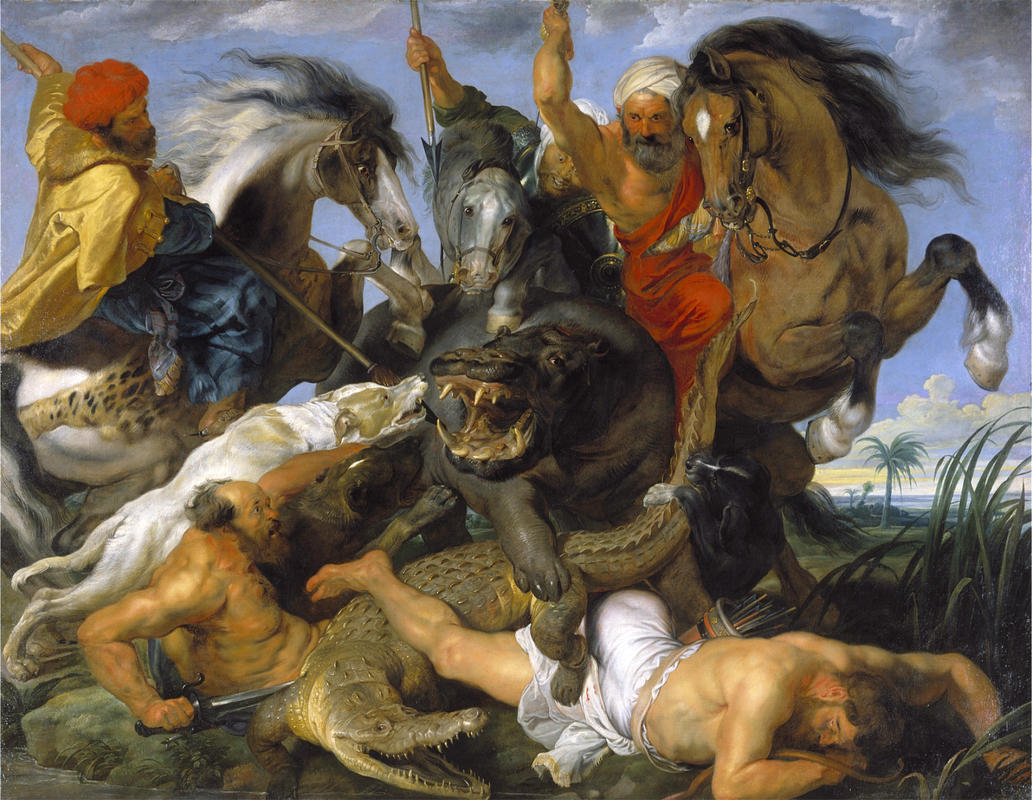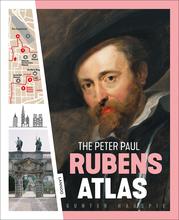More about The Hippopotamus and Crocodile Hunt
- All
- Info
- Shop

Contributor
It’s probable that the first hippopotamus Peter Paul Rubens saw was a taxidermied one.
You can thank Italian surgeon Federico Zerenghi for that, as he’s the one who brought over a couple of hippo skins from Egypt, stuffed them, and exhibited them in Rome and Naples. Coincidentally, Rubens was traveling through Italy at this time. The Hippopotamus and Crocodile Hunt would be one in four paintings depicting hunting scenes commissioned by Bavaria's ruler Maximilian I. Exotic animals would be quite a gift for a ruler, due to their rarity.
The thing with Zerenghi’s taxidermied hippo is that it doesn’t depict exactly what the hippo was like alive. In producing the hippo, it lost a bit of its bulky build. Because of this, and the fact that Rubens wasn’t familiar with this exotic species, he had to rely on a few tricks so no one would let on he didn't know what they looked like. One thing Rubens did was hide most of the hippo’s body behind the attacking animals and hunters. What came out was an anatomically correct hippo, but not a life-size hippo; what we have here is a hippo quite small.
This is an action-packed painting, fit for any Michael Bay film. You’ve got the hippo at the focal point being attacked by the hunters and their dogs. At the same time, they’re on top of a crocodile who is angrily snapping at the man fallen to the ground. To make matters worse, the horses the hunters are riding are stomping on anything and everything beneath them.
This is Rubens' allegory of man vs. beast and nature, an intense melee taking place in an exotic landscape. It’s for you to decide who will win, as Rubens depicts only the struggle and not the victor.
Sources
- Bauer, Hermann, “Baroque in the Netherlands,” Masterpieces of Western Art: A History of Art in 900 Individual Studies, edited by Ingo F. Walther. Cologne: Taschen, 2002.
- Finlay, Nancy, “Eros and Sadism: Delacroix’s Depictions of Animals Eating People,” Double Vision: Perspectives on Gender and the Visual Arts, edited by Natalie Harris Bluestone. London: Associated University Press, Inc, 1995.
- Margocsy, Daniel, “How One 17th-Century Artist Produced a Good painting of an Animal He’d Never Seen,” Slate, November 12, 2014. Accessed January 29, 2020.
- O’Brian, David, Exiled in Modernity: Delacroix, Civilization, and Barbarism. Penn State Press, 2018.
- Spiegelman, Willard, “Finding Inspiration in the Flesh,” The Wall Street Journal, August 20, 2011. Accessed January 30, 2020.
- Williams, Edgar, Hippopotamus. London: Reaktion Books LTD, 2017.
Featured Content
Here is what Wikipedia says about The Hippopotamus and Crocodile Hunt
The Hippopotamus and Crocodile Hunt is an oil painting on canvas by Peter Paul Rubens. It was commissioned in 1615 to decorate Schleißheim Palace, along with three other works depicting lion, wolf, and boar hunts. The cycle of paintings was looted from the palace during the Napoleonic Wars. Only the Hippopotamus and Crocodile Hunt was returned to Munich, at which time it was added to the collection that is now the Alte Pinakothek.
Check out the full Wikipedia article about The Hippopotamus and Crocodile Hunt















